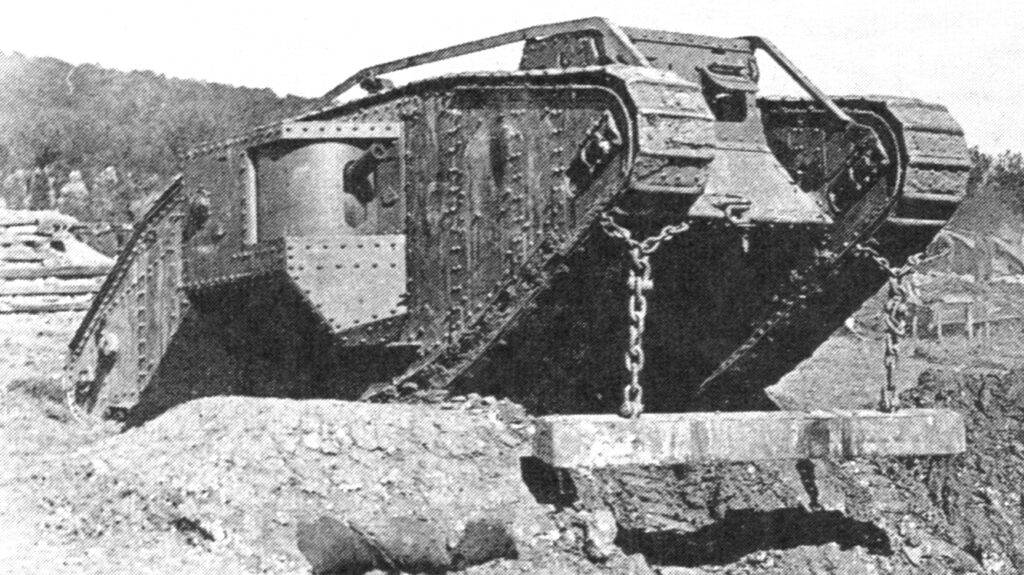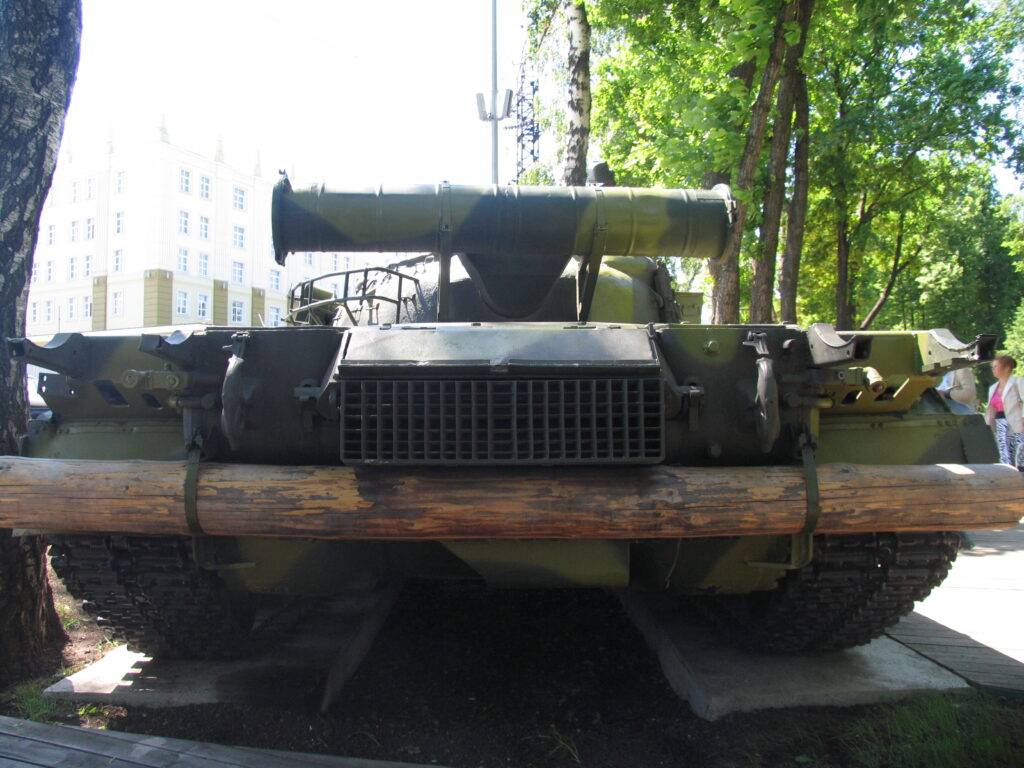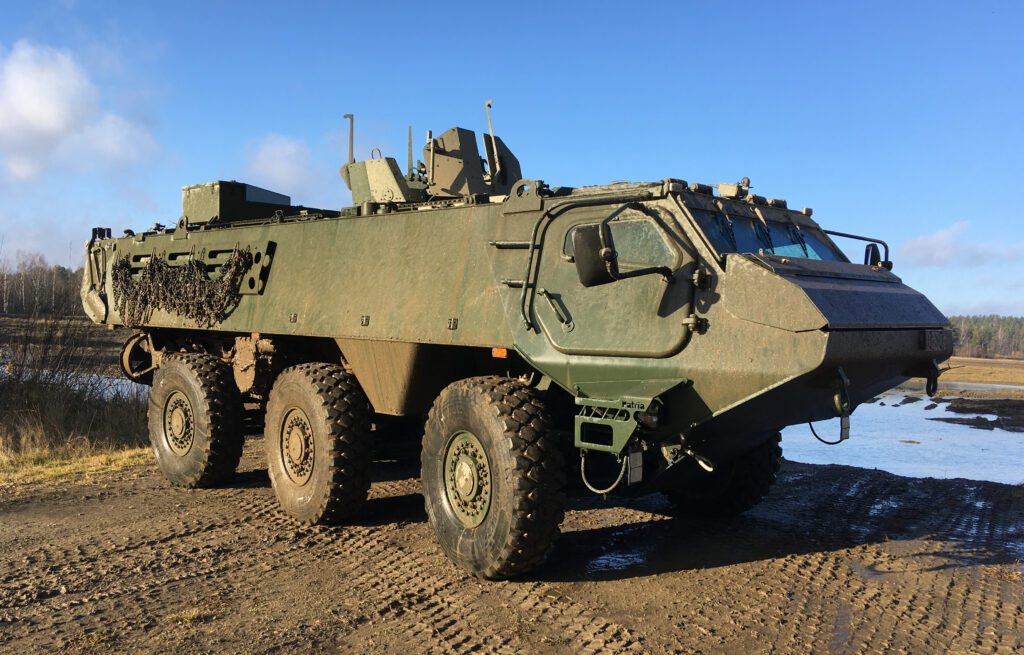In footage from the war in Ukraine, eagle-eyed observers keep spotting something strange: thick, stripped logs lashed to the rear of Russian tanks. No, they’re not firewood, and they’re not some crude form of extra armour either. They’re a Cold War-era survival tool – a so-called unditching beam and they’re still in use because, even in 2025, Russian tanks are getting stuck in the mud.
Soviet military doctrine, recognizing the vast and often unforgiving terrains of Eastern Europe, integrated this feature into their armoured vehicles. Tanks like the T-72 and T-90 were routinely equipped with unditching beams, a practice that continues in modern Russian military operations. The presence of these logs in current conflicts reminds us of their enduring utility.
This odd-looking accessory is no last-minute improvisation. It’s standard equipment, designed and factory-installed for a very specific job: helping a tank free itself when it becomes bogged down in soft terrain. The method is surprisingly low-tech. The crew straps the log across the front tracks. As the treads rotate, the log gets pulled underneath the vehicle, lifting the tank just enough to regain traction and escape.

This technique dates back more than a century. During World War I, British Mark IV tanks employed unditching beams to navigate the treacherous landscapes of the Western Front. These beams were attached to the tank’s tracks, providing the necessary traction to overcome obstacles and avoid immobilization.

Crosscut Saw Was Standard Issue in Tanks
The Soviets perfected unditching beams, equipping every Cold War-era tank with the log and even a hand saw to cut replacements if needed.
In a detailed interview with Maaseudun Tulevaisuus, Lieutenant Colonel Mika Mäenpää, head of Finland’s Armour School, explained how deeply embedded this practice was – even in Finnish defence doctrine: the unditching beam or “telatukki” in Finnish.
“All Soviet-designed battle tanks that came to Finland were equipped with an unditching beam for self-recovery,” Mäenpää said. “It’s an effective method, and in most cases, the vehicle can be freed with it. In really soft terrain, several logs might be needed in sequence to get the tank back to firm ground.”
Mäenpää described how Soviet doctrine anticipated tank formations advancing west across open steppe, where trees would be scarce. That meant the tanks had to bring their own tools. Rain would turn the ground to sludge, and immobilised tanks could be sitting ducks without self-recovery gear.
“During rainfall, even the steppes turn into mud,” Mäenpää told the paper. “If a tank were to get stuck, there might not be a suitable log nearby, so in their view, it was best to carry one with the vehicle.”
In Soviet and Russian tank doctrine, a two-man crosscut saw — known as a justeeri in Finnish — was standard issue, stored inside the tank. This allowed the crew to cut new logs if needed. Western tanks, such as German Leopards or Swedish CV90s, also carry saws — but typically one-man bow saws.
Though modern Finnish tanks no longer carry the log as standard equipment, the method is still taught.
“We still train our crews to use it,” Mäenpää said. “I last felled a tree with a Russian justeeri back when I was a cadet at the Armour School. It cuts when you need it to.”
In training, Finnish troops now use pre-cut logs rather than chopping down trees, to preserve the forests of military zones. But the point remains: when thousands of tanks are expected to roll through unpaved terrain, sometimes the most reliable tool isn’t AI or satellite guidance — it’s a great log.
Read More:
- Task And Purpose: Watch Russian tanks get stuck in mud during training exercise near Ukraine border
- Wikipedia: Unditching beam
- YouTube: The trick the Russians use to save their tanks
YouTube: My old friend, the Soviet Tank Log - YouTube: Why Soviet Tanks Have Logs Attached to Them
https://www.youtube.com/watch?v=56YZMA-1ylA - Maaseudun Tulevaisuus: Jokaisessa kylmän sodan pelätyssä neuvostotankissa oli tämä savotoilta tuttu työkalu (in Finnish)



